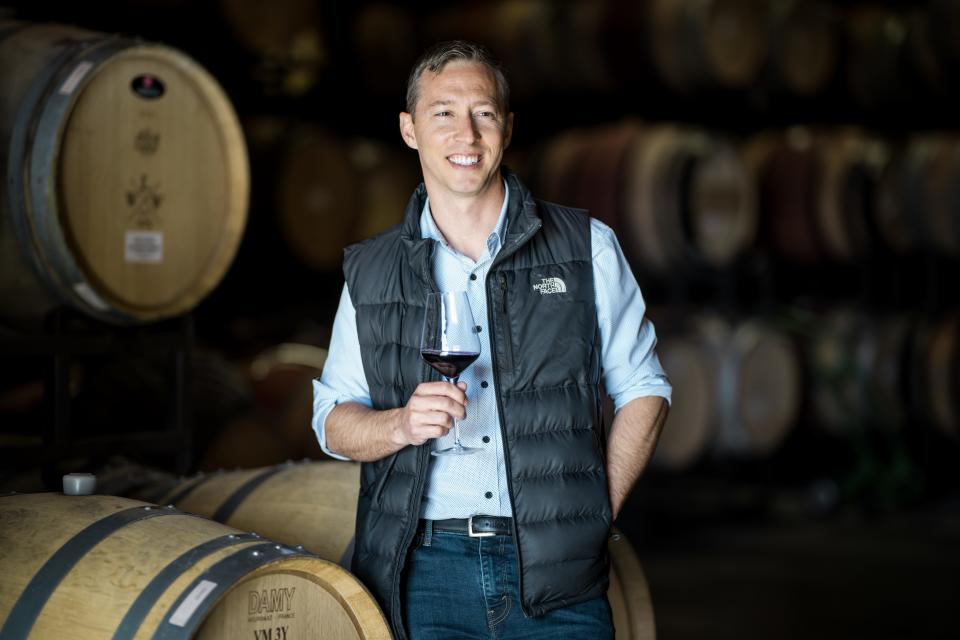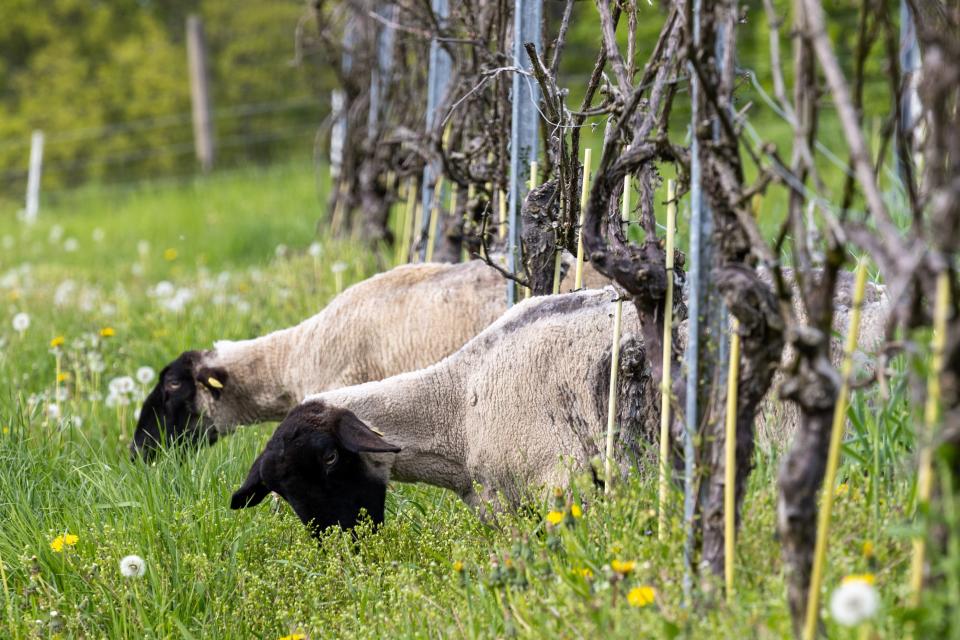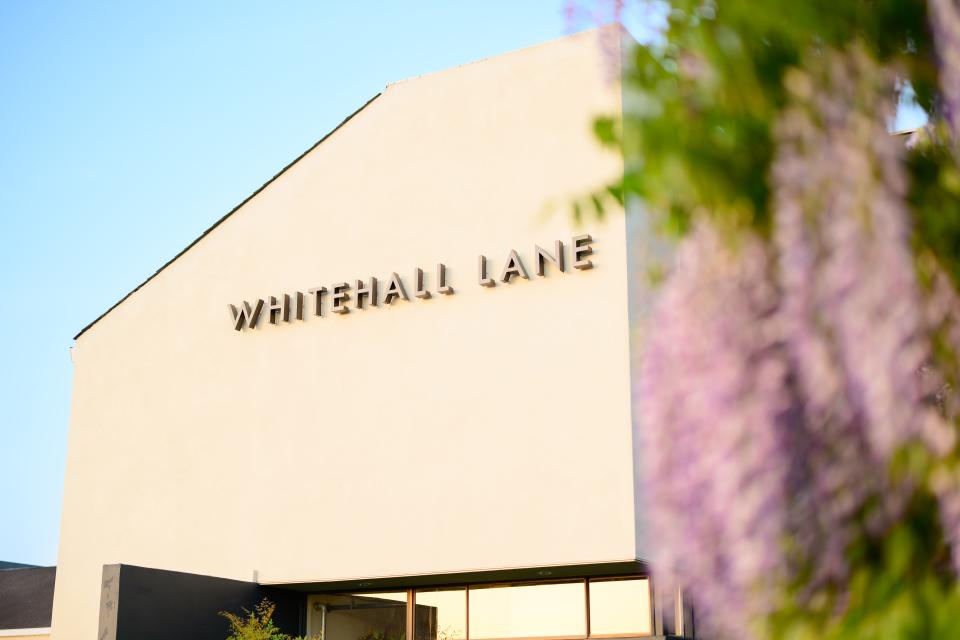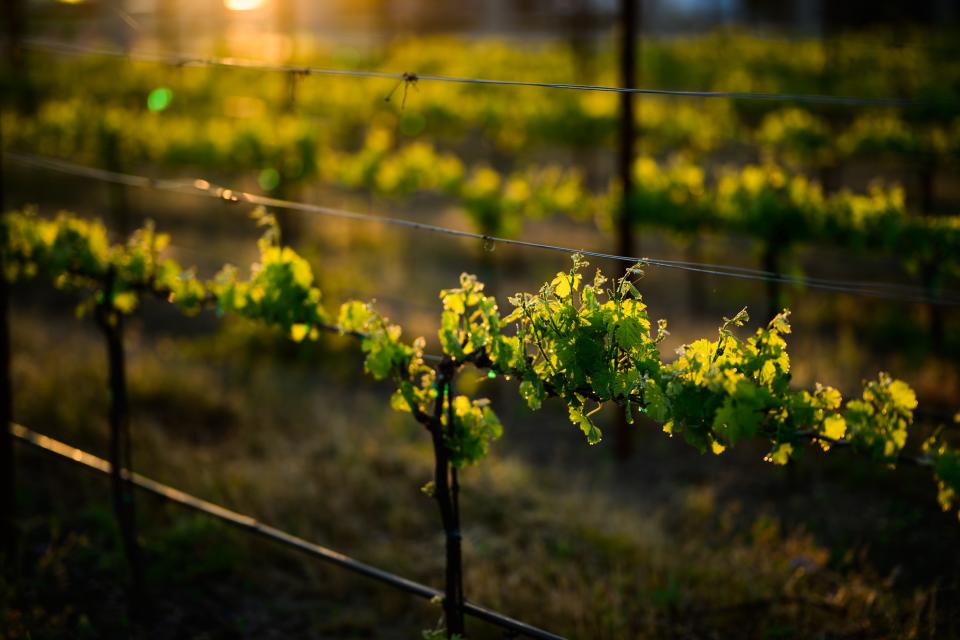There's a simple solution to make wine more sustainable: sheep
The wine industry is embracing environmental sustainability.
Whitehall Lane Winery planted 100 acres of Oakville bluegrass, a cover crop that combats erosion.
The winery also plans to use sheep to chew away weeds and fertilize its eight vineyards.
Wineries are embracing sustainability as the industry navigates shifting consumer values, so one winemaker is taking a tried and true approach: sheep.
The heart of the United States' wine country is nestled in California's Napa Valley, where the Leonardini family purchased a small St. Helena winery in 1993. Now, Whitehall Lane Winery has eight vineyards, including six in Napa Valley and two in Sonoma Valley.
Production is overseen by Jason Moulton, director of Winemaking and Viticulture, who began looking into sustainability practices when he joined the team in 2016. He told Business Insider that winemakers are leaning into regenerative farming, the practice of restoring soil health and biodiversity.

"You are seeing a shift from herbicides and tilling to no-till," Moulton said. "The general public doesn't want to see glyphosate in their wines or vineyards."
While some wineries have turned to artificial intelligence to deal with the industry's ebbs and flows, Whitehall Lane Winery hopes sheep and bluegrass can get the job done.
Sheep grazing is a centuries-old practice that could chomp down on weeds and add natural fertilizer
Although sheep grazing wineries might seem trendy, the American Sheep Industry Association said sheep and other livestock have grazed vegetation for "centuries."
Moulton said studying in New Zealand in the Lincoln University Viticulture and Enology program opened his eyes to the possibility in the mid-2000s. New Zealand has many wine regions, including Auckland and Hawke's Bay.
"The whole country is dotted with cows and sheep," Moulton said, referring to the 9.6 million cattle and 26 million sheep that live there.

Moulton said he hopes acquiring sheep can help phase out traditional tilling, which is turning the soil to oust weeds and unwanted pests. Tilling can kill topsoil and release CO2 into the environment, contributing to the climate crisis.
"This loss of soil carbon can reduce productivity within the soil profile," Moulton said. "It actually forces us to add more synthetic fertilizer."
Moulton said soil should have rich biodiversity or, in other words, be "alive."
"We want our soil to be alive and have beneficial insects like earthworms moving around those root zones," Moulton said. "By tilling, you're just killing it year after year. It's a constant life-and-death cycle."
Sheep, he said, will graze the vineyards and eat away at the weeds. They'll also leave behind natural fertilizer.
"Their byproduct will be all over our property, and I won't have to supplement synthetic nitrogen to our vines," he said.

Moulton has noticed other vineyards the area using sheep, adding that he hopes to get a herd onto the Whitehall Lane Winery vineyards in December or early 2025 before bud break.
The process involves working with shepherds who can provide and oversee herds at the vineyards, typically before bud break. Moulton said one shepherd he's spoken with is based in Nevada. The price for such services will vary, but Moulton said one estimate he viewed cost $210 per acre.
But the sheep alone won't address the problem. Moulton also began using a cover crop called Oakville bluegrass at the vineyards.
How Oakville bluegrass can have a lasting impact on vineyards
A cover crop is a plant that can bring several benefits to a vineyard. Cover crops smother weeds, slow erosion, boost soil health, help keep pests and diseases at bay, and encourage water infiltration.
Moulton has implemented about 100 acres of Oakville bluegrass at the Whitehall Lane Winery vineyards over five years. This particular cover crop lasts 10 years, which is an important selling point for Moulton.

Oakville bluegrass competes with weed growth — meaning fewer herbicides — and requires fewer tractor passes. Tractor passes is the process of taking a tractor down a vineyard row for a job like seeding or tilling.
"That's labor, money, and diesel fuel," Moulton said. "We're trying to do carbon sequestration, so by reducing those tractor passes, we're doing that."
Moulton added that Oakville bluegrass could also combat the three-cornered alfalfa hopper, an insect that spreads red blotch virus.
"By removing the ability for this insect to even live in a vineyard, I just improved longevity," he said.
Are sheep and bluegrass a tangible solution? Moulton thinks so.
Moulton hopes to eliminate herbicides and tilling from the winery's regiment between 2026 and 2028.
He added that Whitehall Lane Winery works with sustainability partners to set benchmarks, so utilizing long-lasting cover crops and sheep could help reach those goals.
"I think it's going to be absolutely necessary to achieve what we're after," he said.
Read the original article on Business Insider

